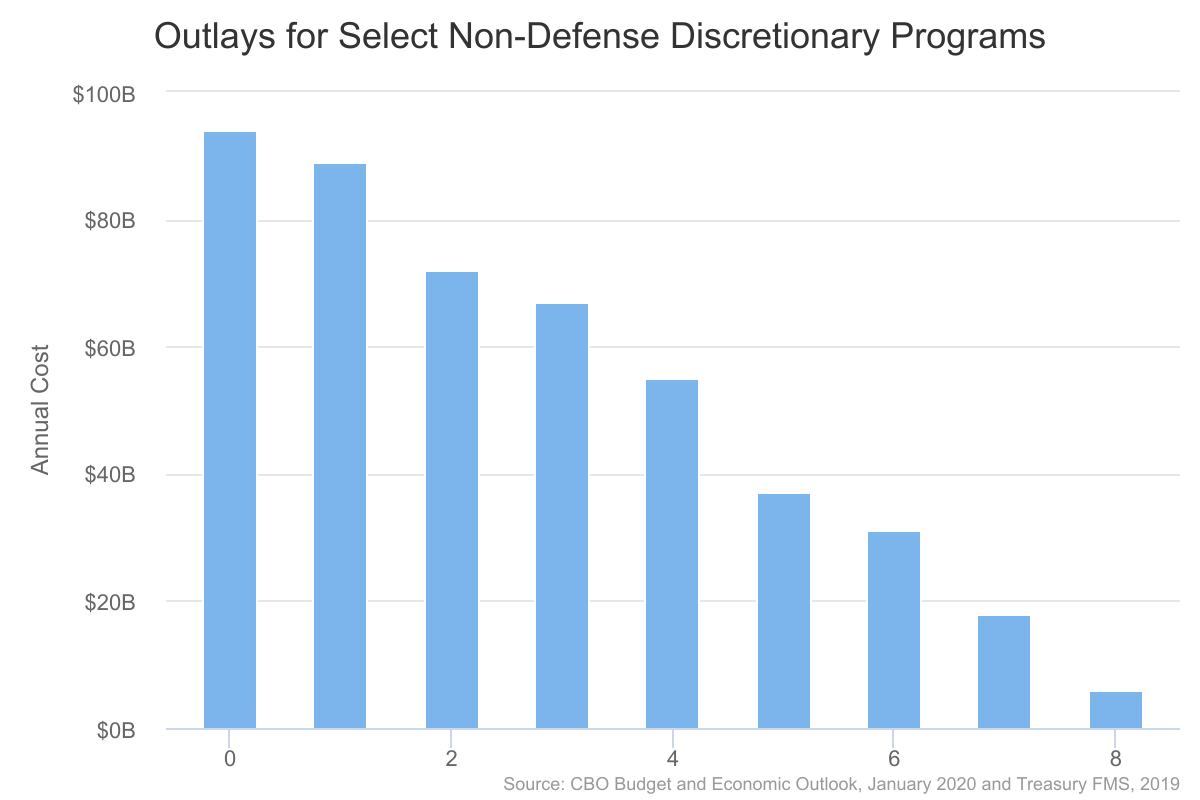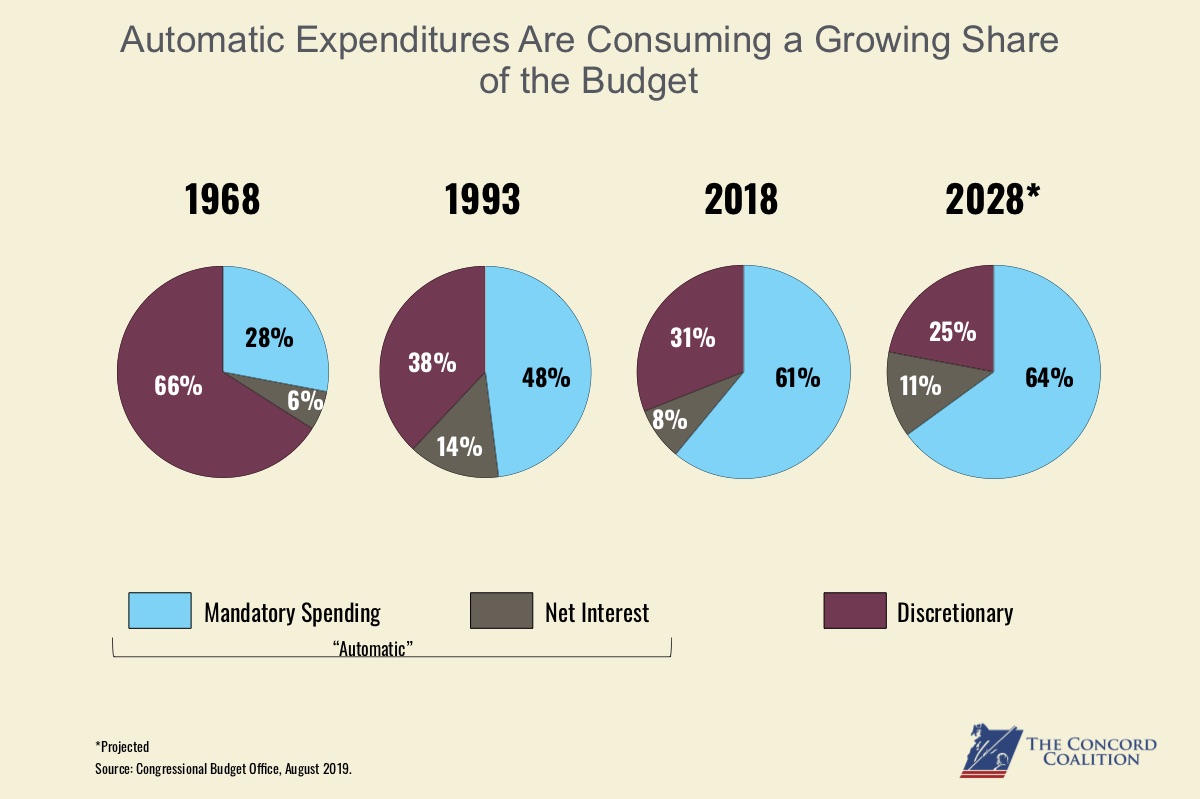Federal spending falls into two basic categories: mandatory spending and discretionary spending. Programs such as Social Security and Medicare, for which benefits are awarded based on pre-determined formulas, are considered mandatory spending because once they are enacted they do not require annual congressional appropriations. Discretionary spending includes all programs for which funding is annually appropriated by Congress during the budget process. Totaling about one-third of the federal budget, discretionary spending programs can be further divided into two categories: defense and non-defense.
Defense Spending
Defense was the largest category of federal spending for several decades, first due to World War II and then the military buildup in conjunction with the Cold War. Following the collapse of the Soviet Union, U.S. defense spending dropped to its modern low: 2.9 percent of gross domestic product (GDP) in 2001. This decline was temporarily reversed following the 9/11 terrorist attacks, as funding was increased to fight the subsequent conflicts in Afghanistan and Iraq. But by 2011, defense spending began to fall once again due to military drawdowns abroad and tight budget caps put in place by the 2011 Budget Control Act.
Like the rest of the federal government, the Defense Department’s budget is strained by changing demographics and rising health care costs. The military’s largest expenses are for personnel compensation and benefits. Despite repeated requests for reform from the Pentagon, lawmakers have done little to overhaul the military’s health and pension systems. Continuing failure to do so risks allowing these expenses to crowd out other important investments in military readiness, potentially jeopardizing national security.
Non-Defense Discretionary Spending
Non-defense discretionary spending (NDD), also known as “domestic discretionary spending,” includes funding for domestic law enforcement, national parks, environmental protection, the judicial system and many other functions of government. Domestic discretionary spending also includes critical investments in our nation’s future such as infrastructure, education and scientific research.

Many proposals to reduce the federal deficit purport to achieve significant savings through unspecified reductions in domestic discretionary spending. But this part of the budget has been tightly constrained in recent years and is projected to continue declining relative to the size of the economy under current law. Substantial additional savings in this part of the budget may be increasingly difficult to achieve. In addition, lawmakers must be careful not to neglect important national priorities and legitimate investments in the country’s future.
Recent Trends
Prior to 1975, more than half of the federal budget consisted of discretionary spending. This meant that lawmakers and the president had the ability to easily adjust most federal spending on a year-to-year basis, giving them the fiscal flexibility to adapt to changing economic and geopolitical circumstances. Changing demographics and the growth of federal entitlement programs, however, have resulted in an increasingly large portion of the federal budget operating on auto-pilot. Today less than a third of federal spending is discretionary.

The decline of discretionary spending is partially a result of the 2011 Budget Control Act. The BCA implemented separate caps on defense and non-defense discretionary spending as part of what was supposed to be a broader deficit-reduction package. However, when lawmakers were unable to agree to any increases in revenue or cuts to mandatory spending programs, the caps on discretionary spending were automatically lowered and enforced through across-the-board spending cuts known as “sequestration.” If these caps remain unchanged, both defense and non-defense discretionary spending are projected to fall below their lowest levels (as a share of GDP) in over 50 years.
These spending caps are problematic for several reasons. First, they are unrealistic: lawmakers have been unable to reach such low levels, leading them to repeatedly adjust the caps. The tighter the caps become, the more difficult they are to maintain. In addition, across-the-board cuts are never the best way to make policy. Instead lawmakers should weigh priorities and make conscious tradeoffs to ensure that critical investments in both national security and domestic programs are made.
Finally, no matter how deep the cuts are to discretionary spending, they are not a substitute for real tax and entitlement reforms. Even if discretionary spending were eliminated entirely – an impossible proposition – the federal budget would still face long-term deficits because of rising mandatory spending and interest payments on the debt.
So while some additional savings from discretionary spending can be part of fiscal reform efforts, those efforts must tackle the real drivers of our long-term fiscal challenges: the growth in mandatory spending and an inefficient tax system.
Continue Reading





